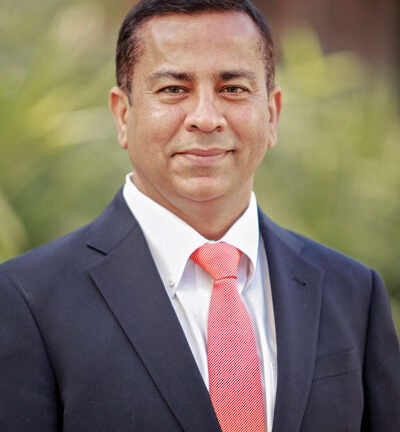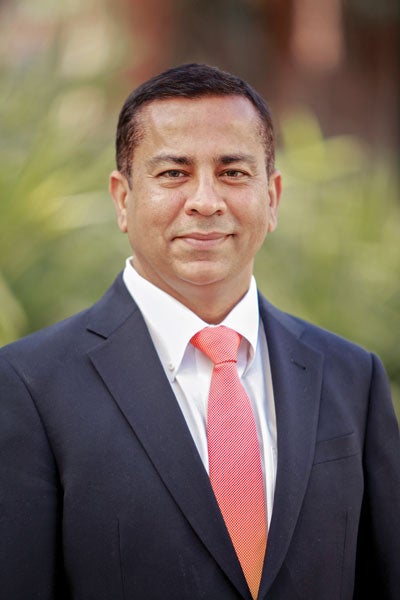
Rohit Varma (Photo/Van Urfalian)
Rohit Varma Takes the Lead at USC Eye Institute
Ophthalmologist Rohit Varma is on a lifelong mission to let children see their future.

Rohit Varma wants to help the world get a little crisper and clearer.
When he was growing up, he was enraptured with his uncle, an ophthalmologist. “I would spend vacations with him, learning about his surgery and research. I was completely fascinated with vision and how important it was,” Varma recalls. He earned a master’s degree in public health at Johns Hopkins University. After his medical residency at the Johns Hopkins Hospital, he joined a project to analyze images of the optic nerve, which connects the back of the eye to the brain.
Varma’s interest in public health quickly crept into his research. During his 19 years at Keck School of Medicine of USC as a professor, he launched the influential Multiethnic Pediatric Eye Disease Study and the Los Angeles Latino Eye Study, as well as studies into African-American and Chinese-American groups, to understand the impact of eye disease in ethnic communities.
After spending two years at the Illinois Eye and Ear Infirmary at the University of Illinois at Chicago, Varma in February returned to the Keck School as chair of the Department of Ophthalmology and director of the USC Eye Institute. The ability to work in Los Angeles’ diverse communities was a big draw.
“I’ve had numerous collaborations with faculty and staff, and most of the community work is done in LA,” Varma says. “I wanted to look into the burden of eye disease on infants and preschool children in Glendale, Monterey Park and Inglewood, older African-Americans in Inglewood, Latinos in La Puente, and Chinese-Americans in Monterey Park and Alhambra.”
His own experiences inspired some of his work. When Varma’s son needed glasses, Varma had no idea until the boy’s school notified him. “That highlighted the problem to me: If even I didn’t notice vision problems, how would people not related to an ophthalmologist get the care they need?” he says. “One of the interesting things we found in our study was that 90 percent of children who had a need for an eye exam had never been seen by an eye doctor. There’s a real need for getting better school vision screenings to identify these vulnerable children.”
In many ways, the Los Angeles area is a microcosm of the United States, and it’s tough to find any other place with so many ethnic communities, Varma says. “That’s why Los Angeles is such a wonderful community laboratory for us. It provides us with so much insight into people in a relatively small geographic area.”
An expert in glaucoma, Varma helped pioneer the development of imaging techniques that aid in the early diagnosis of glaucomatous optic nerve damage. He also is involved in developing pressure sensors and drainage devices that could be implanted inside the eye, with the potential to control or improve glaucoma.
While all medical research seeks to make a difference in people’s lives, Varma is proud that ophthalmology has a unique ability to change a patient’s day-to-day quality of life. “We are fortunate in ophthalmology that we have some of the most impactful surgical procedures, like cataract surgery, that bring back vision people had lost,” Varma says. “It’s almost like a miracle—the world all of a sudden is clearer and crisper and colorful and meaningful.”
